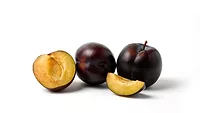New GAO Report Scrutinizes Pesticide Monitoring in Food by FDA and USDA
The monitoring of pesticide residue by the U.S. Food and Drug Administration (FDA) and the U.S. Department of Agriculture (USDA) has been criticized by a new report from the General Accounting Office (GAO). In “Food Safety––FDA and USDA Should Strengthen Pesticide Residue Monitoring Programs and Further Disclose Limitations”, the GAO suggests the following:
The FDA and USDA should enforce major changes in their pesticide monitoring programs––including increasing the number of food samples tested, paying special attention to pesticides that have Environmental Protection Agency (EPA) established tolerances instead of those that do not, and display more transparency in annual reports about not testing for pesticides in all foods.
Such changes could eventually reveal whether or not regulatory violations are rampant throughout each agencies’ pesticide residue testing. Over the years, established testing programs have shown few incidences of violation. Also, a helping hand from Congress might be necessary as the suggested changes would require additional funding and resources.
Additional findings include:
- The FDA tests less than one-tenth of one percent of all imported fruits and vegetables. Less than one percent of domestic fruits and vegetables are tested. The small sample sizes suggest that results that may not be “statistically valid”.
- The FDA does not test foods for many pesticides that have strict residue limits set by the EPA. This lack of testing, according to the GAO, should be stated in the FDA’s annual reports.
- Testing by the USDA’s Food Safety and Inspection Service and the Agricultural Marketing Service were found to be statistically valid. But like the FDA, the FSIS also doesn’t test for pesticides with established tolerances.
In response to the GAO’s report, the FDA says they will look into the feasibility of the suggested changes. However, they do not plan to disclose which pesticides they do not test for as users could “more easily circumvent” their testing if such disclosures were made.
On the USDA front, they have agreed to begin sharing the names of the pesticides they do not test for in their annual report. They also plan to disclose more details about their pesticide sampling plans.
Visit GAO.gov to see the official report.
Looking for quick answers on food safety topics?
Try Ask FSM, our new smart AI search tool.
Ask FSM →







